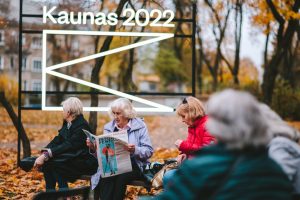Kaunas 2022 memory program will build bridges between different cultures, religions and languages
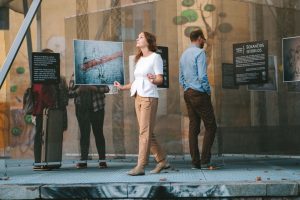
In 2022, the Kaunas 2022 program “Memory Office” will invite the audience to a year-long cultural research of Kaunas DNA. An extremely rich and multi-layered artistic program will lead to a brave confrontation with the city’s complex past like a mirror that helps you get to know yourself and your humanity better.
The program of events, which brings together creators from Lithuania and all over the world, plus a group of partners, will allow locals to get to know their city better, and for the visitors, it will become an atlas of new stories of Kaunas. World-renowned artists William Kentridge, Philip Miller, Jenny Kagan, the Sala-Manca Collective group of artists, and others will help to explore the city. The most important events in the city’s history, which shaped, changed and raised the city from the Second World War, the 1972 “Kaunas Spring” to the myths, stories and legends of the present-day city will be presented through exhibitions, concerts and performances.
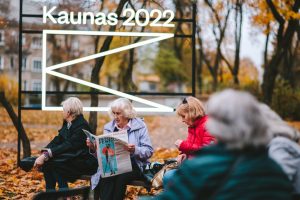
Extensive four months programme of the CityTelling Festival
The bigest event of the “Memory Office” program, the CityTelling Festival, which is already popular with visitors, will take place in 2022 for four months and will talk about the return and the community spirit. In this more than ever conflicted world, we will try to forge a new relationship not only with our painful history, but also with those who live next to us today. Extensive program of the festival includes stories of various forms that build bridges between different cultures, religions and languages. Stories that teach to empathize and listen to the Other.
The international program will invite to exhibitions, performances, concerts of internationally acclaimed artists, new routes created by city history enthusiasts and excursions to explore the different side of the city. The storytellers’ project “Where can I find you?” will spread around the city’s cafés, streets and courtyards, looking for everyone who wants to hear and share the stories of the modern world. Finally, the conference on the idea of Europe will raise one of the most pressing questions of today: what is Europe and what is our place in it?

Special attention to the Jewish memory of Kaunas
The Memory Office program and the CityTelling Festival will pay special attention to the Jewish memory of the city. In 2022, the European Capital of Culture will invite Litvaks scattered all over the world to meet at the World Litvak Forum. On 29-30 September, in the program of discussions and culture, famous artists, scientists and representatives of the world of culture will talk about the Litvak identity, memory, and the role of culture in giving meaning to multicultural memory and creating new opportunities for dialogue.
One of the most anticipated events of Kaunas – European Capital of Culture 2022 is the work “Kaunas Cantata: Reconciliation” by composer Philip Miller and artist Jenny Kagan. The largest and most massive musical experience of Kaunas to date, dedicated to the symbolic reconciliation of nations, will be played during the Litvak Forum. More than 400 performers joined this piece of vocal instrumental music: local musicians and singers, choirs, representatives of different genres and generations.

The major events of the four-month CityTelling Festival program are also dedicated to the Jewish theme – exhibitions, performances, musical stories, installations dedicated to the heritage of Jewish memory and cultural signs in the city spaces, and many other activities. Litvak artists who returned to Lithuania from the Republic of South Africa, Great Britain, France and Israel took a particularly active part in the development of the program. Main events: William Kentridge’s exhibition “What We Don’t Remember”, musical performance “Dybbuk”, Jenny Kagan’s exhibition “Out of the Darkness”, photography exhibition “The Last Litvaks”, art installation in public spaces “Threshold” and others.
The book “Kaunas Jews”, which will be released in Lithuanian and English languages this year, is no less important. This is the first such presentation of the Jewish history of Kaunas from the most important facts, concepts and names. This most comprehensive book on the subject to date does not seek to answer all the questions, but starting from the 15th century will consistently remind the contribution of Kaunas Jews to education, medicine, industry, business, culture and other areas of life, and will touch on the painful pages of history.

Events dedicated to the times of the disobedient and a different look at the city and its people
The special program of events will remind of the time that led to the biggest historical turning point in the life of the city. The nineteen-year-old Romas Kalanta who set himself on fire on 14 May 1972 and the events that followed led to the birth of the so-called “Kaunas Spring” – anti-Soviet protests that involved thousands of people and took place mainly in Laisvės alėja (Liberty Avenue). These events left traumatic traces not only in the further development of the city, in its cultural life, but also in the fates of a large number of young Kaunas residents. These historical events and the period of the disobedient will be revived within the Kaunas 2022 program through performances, exhibitions, concerts, discussions, meetings, etc. dedicated to this topic.
The crucial point of this program will be the exhibition “1972: Regime, Youth and Art”, in which paintings, photographs and films, documentary testimonies of musical life, youth fashion and other artefacts will tell about alternative culture and non-Soviet way of life in Soviet Lithuania. The exhibition will reveal the diversity of mindsets and creativity in the Soviet background that levelled everyone. It will explore how aesthetic tastes and ethical attitudes in Soviet times shaped different patterns of life and the atmosphere of disobedience to the government.
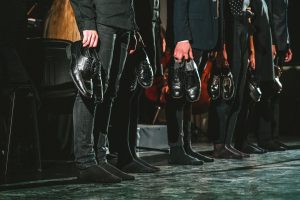
A series of events dedicated to the identity of the city will invite to look at the city and its residents from a different angle. We will examine the city, re-explore the city’s industrial heritage and histories of some factories. Perhaps the most interesting highlight of the program is the conversation between Kaunas and Vilnius about the confrontation between the two cities, the silent struggle and the mute dependence. In the exhibition, which will take place simultaneously in the two cities, MO museum together with Kaunas City Museum will remind how the big cities shaped each other and how modern Lithuania arose from the tensions between them.
Important events: Exhibition “1972: Regime, Youth and Art”, concert ” Made in Kaunas”, Historical-documentary performance “Kalanta”, rock opera “Kalanta”, exhibition “Kaunas – Vilnius: move the mountains”, route “Memory Circle”, exhibition “The Big Industry” and others.
Kaunas walls also tell stories
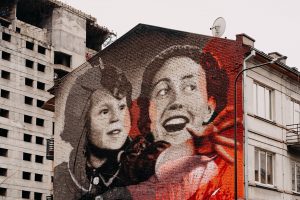
Kaunas and Kaunas district have been adorned with works of street art that bring back the faces of those who lived before us, tell their fates and present culture. This way, the poet Lea Goldberg , the charismatic Rosian with her mother Gerta, and the signs of the Tartar legacy returned to Kaunas again. The number of these meaningful wall drawings is increasing, so when wandering around Kaunas, Kulautuva or Kačerginė, don’t forget to look around and stop to read the inscriptions. Look for the special memory street art route at atmintiesvietos.lt.
And this is only a short look at the Kaunas – European Capital of Culture 2022 program “Memory Office”, which brings back the memory of the city’s ethnic communities.
Next year, Kaunas and Kaunas district will become one big European stage and turn the city to a place where you will not escape culture. More than 40 festivals, 60 exhibitions, 250 performing arts events (of which more than 50 are premieres), and over 250 concerts are planned to take place in 2022. It is going to be the year-long non-stop biggest co-creative festival of all. Come co-create and celebrate with us!
Full programme: https://kaunas2022.eu/en/programme/
Modernism for the Future'. Architecture as Inspiration for Cinema, Dance, Music and Beyond

While becoming the European Capital of Culture is the most anticipated event in Kaunas, it's not the only one. The UNESCO World Heritage Commission now has to decide whether the modernist architecture network of Kaunas will be included in the prestigious global list of protected heritage. The acknowledgement would continue the list of international appreciations that already includes the European Heritage Label.
The step to UNESCO is a challenge not only for architecture and urbanism professionals but for every citizen of Kaunas and Kaunas district. This is where 'Modernism for the Future', one of the key programmes of Kaunas 2022, steps in. It aims to awaken the responsibility for our surroundings and create a solid emotional bond with the urban landscape and heritage.
How much modernism does Kaunas have?
During the Interwar Period, Kaunas and Kaunas District have become the epicentre of significant events in Lithuania and Europe. This period has left some 6000 buildings created in the modernist spirit.
These are not only buildings but also locations, ideas, authors, builders, and promoters. Their destinies, too. To have such a condensed heritage enriched by various individual stories and meanings is a great treasure. It is a living testament of history from the period of prosperity and modernisation that changed the everyday habits and coincided with significant changes in European and global cities, urban places and their residencies. Within a short period, modernism has become a dominating style of architecture. However, most of these buildings are in poor condition, forgotten, abandoned, or even empty today. 'Modernism for the Future', together with its extensive list of partners, aims to change this.
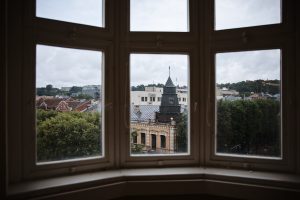
The first steps
'Modernism for the Future' is an open space for initiatives and meetings, welcoming professionals from various fields, building owners, heritage community and representatives of cultural initiatives for discussions, idea workshops, art and culture, which together create the strategy for preservation, interpretation and dissemination of modernist heritage.
Symbolically, the program chose to creatively enable 360 buildings in 365 days next year. The number 360 symbolises all possible perspectives of modernism: cultural, political, economical and more, whereas the number 365 asks us to notice everyday heritage.
The project includes the heritage community gathered on a website, collecting and sharing knowledge about modernist objects, their residents, and events of Kaunas and other Lithuanian and European cities. Dissemination of good practice, creative workshops, educational activities, as well as calls for artistic interpretations of modernism and art projects in modernist spaces are all part of the programme of the project.
The first international 'Modernism for the Future' conference took part in Kaunas in 2018. Two international summer schools have already been organised in the framework of the program. The first one explored downtown Kaunas; the second one took the students to the Kačerginė resort in the Kaunas district. In 2021 and 2022, the school is organised by the Kaunas University of Technology.
A unique movie for international audiences
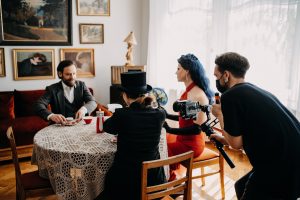
Probably the most unexpected idea of 'Modernism for the Future' is a film that will be premiered in international festivals. 'Pleats/Folds', directed by Irish artist Aideen Barry, tells the story of Kaunas modernism and its value for future generations with the help of stop motion animation. Students, volunteers, residents of modernist buildings, creative writing enthusiasts, dancers and even the Mythical Beast of Kaunas co-created the film.
'A video art project aimed at international audiences was considered already when preparing the bid for Kaunas 2022 – the initial idea was to include the local personalities in the story about the unique architecture of interwar Kaunas,' Viltė Migonytė-Petrulienė, the curator of 'Modernism of the Future', remembers. She explains that inviting Aideen Barry added ambition to the idea – the artist is known for paying a lot of attention to social topics, including local communities. The curator says, 'Pleats/Folds', a creative playground for the Kaunas and Kaunas district residents, is no exception. The filmmaking process included workshops of art as therapy, game and way of learning, while the result is as important as the path. It's a collective message to Europe and the world about the modernist Kaunas of the future, as well as its biggest treasure – the people that love the city.
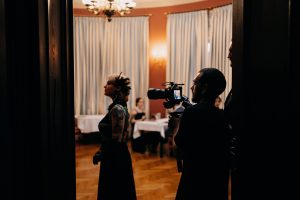
From electronic music to investigating shame
'Modernism for the Future' already has various collaborations with local and foreign partners lined up for 2022.
'MoFu 360/365' is a project financed by the European Union's programme 'Creative Europe 2014–2020' exploring connections with other European cities, from Eastern, Central to Western. Two-year project participants from Kaunas 2022 (Lithuania), Institute of Culture Strategy (Lviv, Ukraine), interdisciplinary arts centre 'Vaizard, z.ú.' (Brno, Czech Republic), regional development associations in the Kortrijk region and inter-governmental heritage organisation 'Intercommunale Leiedal' (Belgium) and partners in Tel Aviv (Israel) invite artists, together with local researchers and the heritage community, to create 17 artistic projects in modernist buildings.
The unique projects will strengthen the narrative of Europe's modernist heritage and will seek to reflect its contemporary significance for the global society. The project's final result will be presented at the opening weekend of the European Capital of Culture 2022 exhibition in the Kaunas Central Post Office. The exhibition will run for four months.
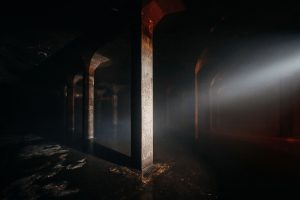
In 2022, the Kaunas territorial division of the historical Lithuanian Artists' Association will be launching the 100 Images of Kaunas project: a series of creative works and curated art exhibits located in 40 public and residential spaces of Kaunas and Kaunas District, built during the Interwar period.
The Reciprocal Residency Programme DeMo (Decoding Modernity) is an exchange programme during which the residents will have the opportunity to analyse the developmental processes of modernity in various social and cultural contexts. DeMo, a three-year programme (2020-2022) of Kaunas Artists' House, together with the Londonderry Center for Contemporary Art, the thankyouforcoming residency program in Nice, the Culture Center LAB in Novi Sad, and other partners invites artists, curators, researchers of the cultural field, and multidisciplinary collectives to explore potential connections, overlaps and divergences between the different forms and expressions of modernity.
The Kaunas division of the Lithuanian Union of Architects will be launching three projects in 2022 to analyse and creatively retell the history of Kaunas architecture during the 20th century. The first project, [In]visible Architecture by Rasa Chmieliauskaitė, aims to engage people with visual impairments in learning about their architectural environments through the use of new tactile tools. The second project, Architecture of Desire by Tautvydas Urbelis, is a continuation of international partnership with the Architecture of Shame project in Matera, Italy, in 2019. There, the artists analysed the expression of shame in local architecture. In Kaunas, the author will be presenting a creative interpretation related to the expressions of desire in spaces of Kaunas City. Additionally, the award-winning architect Gintaras Balčytis and his team will present an exciting program of Kaunas Architecture Festival that will include exhibitions, workshops and a forum.

Good Music Live (Gera Muzika Gyvai in Lithuanian) aims to acquaint the Lithuanian audience with world music – a genre of music that embraces both modernity and traditionality by merging deeply-rooted traditions with the feelings and experiences of a modern person. In 2022, Good Music Live will be presenting the music programme World Music for Kaunas – a series of events in modernist buildings of Kaunas and Kaunas District, with concerts taking place all year round in apartments, public facilities and spaces built during the Interwar period.
Digital Tsunami, a platform for underground music, is organising a festival called Optimismo. It will celebrate modern electronic music and architecture, employing contemporary experimental music to reveal the relevance and value of modernist heritage and architecture in Kaunas. In 2022, Digital Tsunami will enrich the city's numerous spaces with a symbiosis of music and contemporary technological solutions.
Kaunas Dance Theatre AURA is the very first theatre of modern dance in Lithuania. Its project Pulsating Modernism of Kaunas by AURA includes a series of interactive guided excursions accompanied by live performances. Set to be initiated in 2022, the programme will provide the opportunity to get to know the modernism of Kaunas from a different point of view.
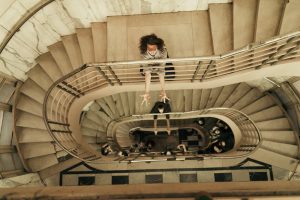
Kaunas Photography Gallery is currently organising a programme of residencies Photography – A Document for the Future, which will provide the opportunity to analyse and represent the modernism of Kaunas in an international context. The project will be welcoming residents from Germany, Scotland, the Netherlands and more to present their interpretations of Kaunas modernism.
The National M. K. Čiurlionis Museum of Art, known as the crown jewel of Kaunas modernism, also has several departments in other historical buildings of Kaunas, namely houses and apartments of interwar celebrities. The A. and P. Galaunė House-museum has already opened an exhibition, 'Arno Funk[tionalism]', dedicated to one of the busiest architects of the golden era of Kaunas.
'Modernism for the Future' is just one of many programmes of Kaunas 2022 that help Kaunas and Kaunas district to become a contemporary capital and one big European stage. In 2022, it will be a city where you cannot escape culture.
Full programme: https://kaunas2022.eu/en/programme/


